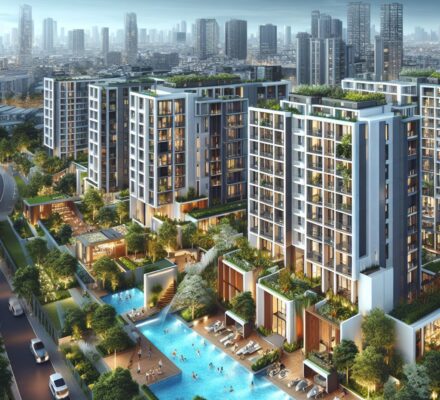Imagine a bustling multifamily property, with tenants happily enjoying their well-maintained units and the efficient operations of the management team. Now, picture yourself as the property manager, armed with the top strategies to boost your return on investment (ROI).
In this article, we will delve into the key tactics that will help you achieve this goal. From setting competitive rental rates to leveraging technology, enhancing tenant experience, and maximizing revenue, these data-driven insights will empower you to excel in multifamily property management.
Key Takeaways
- Conduct thorough market research and analysis to set competitive rental rates and lease terms
- Implement cost-effective maintenance strategies to minimize expenses and keep the property in good condition
- Leverage technology to streamline operations and improve efficiency in property management tasks
- Enhance tenant experience and retention by providing excellent customer service, maintaining amenities, and creating a positive living environment
Setting Competitive Rental Rates
To set competitive rental rates for your multifamily property, conduct thorough market research and analysis. This step is crucial to ensure that your rental rates align with the current market trends and demands.
Start by gathering data on similar properties in the area, including their rental rates, amenities, and occupancy rates. This information will give you a baseline to work with and help you determine the competitive edge of your property.
Next, analyze the data you have collected to identify any patterns or trends. Look for factors that may influence rental rates, such as location, property size, and amenities offered. Consider both the macro and microeconomic factors that may impact the market, such as population growth, job opportunities, and local rental regulations. By analyzing these factors, you can gain valuable insights into the market dynamics and make informed decisions about your rental rates.
Additionally, consider conducting a rent survey to gather feedback from current and potential tenants. This will provide you with valuable insights into their preferences, budget, and expectations. Use this information to tailor your rental rates and offerings to meet the needs of your target market.
Implementing Cost-Effective Maintenance Strategies
Optimize maintenance costs by prioritizing preventive measures and proactive repairs. By implementing cost-effective maintenance strategies, you can ensure the longevity and efficiency of your multifamily property while minimizing expenses.
Here are four key strategies to help you achieve this goal:
- Regular Inspections: Conducting routine inspections allows you to identify potential maintenance issues before they escalate into costly repairs. By addressing problems early on, you can prevent further damage and save money in the long run.
- Planned Maintenance: Develop a comprehensive maintenance plan that outlines the specific tasks and schedules for each area of your property. This proactive approach helps you stay on top of necessary maintenance activities, such as HVAC system cleaning, gutter cleaning, and roof inspections.
- Vendor Management: Maintain a strong network of reliable and cost-effective vendors who can provide quality maintenance services. By negotiating favorable contracts and monitoring vendor performance, you can optimize your maintenance budget and ensure timely repairs.
- Tenant Education: Educate your tenants about their responsibilities in maintaining the property. Provide guidelines on proper care and usage of appliances, plumbing fixtures, and common areas. This proactive approach can reduce the likelihood of tenant-caused maintenance issues and unnecessary expenses.
Leveraging Technology for Streamlined Operations
By leveraging technology, you can streamline operations and enhance efficiency in multifamily property management.
Technology has revolutionized the way property managers handle day-to-day tasks, enabling them to automate processes, reduce manual errors, and save time.
One of the key areas where technology plays a vital role is in maintenance management. With the help of computerized maintenance management systems (CMMS), property managers can schedule and track maintenance tasks, monitor work orders, and ensure timely completion of repairs. This not only improves the overall efficiency of maintenance operations but also enhances tenant satisfaction by addressing their concerns promptly.
Additionally, technology can be utilized for effective communication and collaboration among property management teams. Cloud-based platforms and mobile apps enable real-time communication, allowing property managers to coordinate with contractors, vendors, and staff seamlessly.
Furthermore, technology can assist in financial management, lease administration, and marketing. Automated rent collection systems simplify the payment process and reduce the risk of late payments. Advanced analytics tools provide valuable insights into market trends, enabling property managers to make informed decisions about rent pricing and marketing strategies.
Enhancing Tenant Experience and Retention
How can you improve tenant experience and retention in multifamily property management?
Enhancing tenant experience and retention is crucial for the success of any multifamily property. By implementing the following strategies, you can create a positive environment that fosters tenant satisfaction and encourages long-term leases:
- Personalized Communication: Regularly communicate with tenants to understand their needs and address any concerns promptly. This shows that you value their feedback and are committed to providing excellent service.
- Amenities and Community Spaces: Offer well-maintained amenities such as fitness centers, swimming pools, and communal areas where tenants can socialize and build a sense of community. These spaces can enhance tenant satisfaction and encourage them to stay longer.
- Quick Maintenance and Repairs: Respond promptly to maintenance requests and ensure that repairs are carried out efficiently. Timely resolution of issues contributes to tenant satisfaction and reduces the likelihood of them seeking alternative housing options.
- Tenant Appreciation Events: Organize events or activities to show appreciation for your tenants. This could include holiday parties, barbecues, or educational workshops. These events foster a sense of belonging and strengthen the relationship between tenants and property management.
By focusing on tenant experience and retention, you not only create a positive living environment but also increase the likelihood of tenants renewing their leases and recommending your property to others.
Now, let’s explore the next topic: maximizing revenue through effective marketing and leasing.
Maximizing Revenue Through Effective Marketing and Leasing
To further increase your ROI in multifamily property management, continue maximizing revenue through effective marketing and leasing strategies. By implementing these strategies, you can attract more qualified tenants and optimize your rental income.
One key strategy is to create targeted marketing campaigns that highlight the unique features and amenities of your property. This can be done through various channels such as online advertising, social media, and email marketing. By showcasing the benefits of living in your property, you can attract potential tenants who are willing to pay higher rents.
Additionally, optimizing your leasing process can also contribute to maximizing revenue. This involves streamlining the application and screening process to minimize vacancies and reduce turnover. By efficiently handling inquiries, conducting thorough background checks, and offering flexible lease terms, you can attract and retain high-quality tenants who are more likely to pay higher rents and stay for longer periods.
To give you a better idea of effective marketing and leasing strategies, here is a table outlining some key tactics:
| Marketing Strategies | Leasing Strategies |
|---|---|
| -Targeted online advertising | -Streamlined application process |
| -Engaging social media presence | -Thorough background checks |
| -Email marketing campaigns | -Flexible lease terms |
Frequently Asked Questions
How Can Property Managers Effectively Handle Tenant Complaints and Resolve Conflicts?
To effectively handle tenant complaints and resolve conflicts, you need to listen attentively, empathize with their concerns, and take prompt action. By addressing issues promptly, you can maintain tenant satisfaction and minimize potential negative impacts on your property’s ROI.
What Are Some Effective Strategies for Reducing Vacancy Rates and Attracting High-Quality Tenants?
Looking to reduce vacancy rates and attract high-quality tenants? Implementing targeted marketing campaigns, offering competitive rental rates, and maintaining well-maintained properties are some effective strategies that can help you achieve these goals.
Are There Any Legal Considerations or Regulations That Property Managers Need to Be Aware of in the Multifamily Property Management Industry?
Yes, there are legal considerations and regulations that you, as a property manager in the multifamily industry, need to be aware of. These include fair housing laws, lease agreements, and building codes.
How Can Property Managers Effectively Screen Potential Tenants to Ensure They Are Reliable and Responsible?
To effectively screen potential tenants, consider using a comprehensive application process, including background and credit checks, employment verification, and reference checks. This helps ensure reliable and responsible tenants for your multifamily property.
What Are Some Innovative Ways to Create a Sense of Community and Foster Positive Relationships Among Tenants in Multifamily Properties?
To create a sense of community and foster positive tenant relationships in multifamily properties, you can consider implementing innovative strategies. These may include organizing community events, creating shared spaces, and utilizing technology for tenant communication and engagement.




